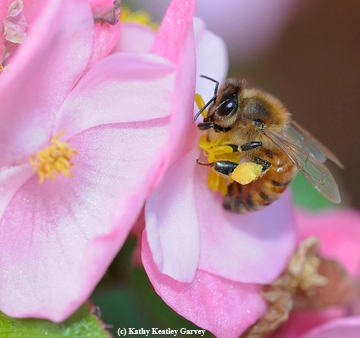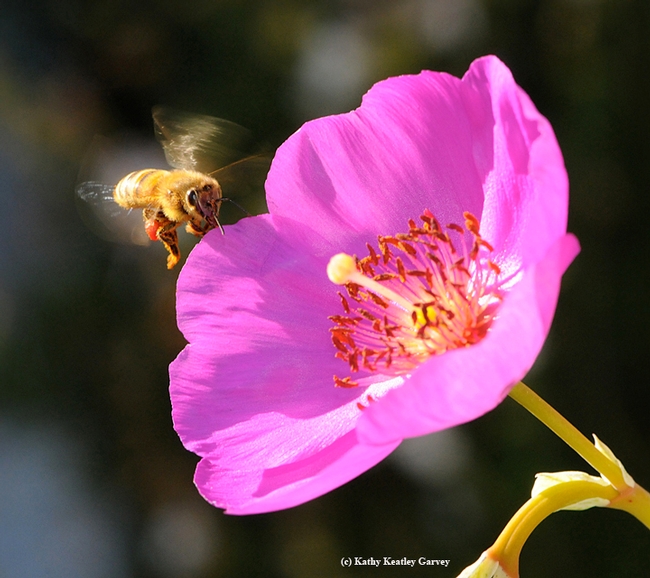
Well, not just pink. All other colors, too.
It's National Honey Bee Day on Saturday, Aug. 20.
That's when we officially celebrate the honey bee, Apis mellifera, which the European colonists brought to the Jamestown colony in Virginia in 1622. The honey bee didn't arrive in California until 1853 when a beekeeper brought colonies to the San Jose area.
How did National Honey Bee Day originate? U.S. beekeepers launched the event in 2009. In fact, they petitioned the U.S. Department of Food and Agriculture to recognize and pay tribute to its smallest agricultural worker, to spread awareness, and to advance beekeeping. This year's theme: "Beekeeping: A Hobby with a Sweet Taste."
When bees are out foraging, they bring back to the colony four essentials: nectar, pollen, water and propolis (plant resin that's used as a glue to seal small spaces).
But that's not the only thing they bring back to the hive.
They can also bring back pesticides that can kill or harm a colony.
Just in time for National Honey Bee Day, the University of California Statewide Integrated Pest Management Program (UC IPM), affiliated with UC Agriculture and Natural Resources, has developed and published Bee Precaution Pesticide Ratings "to help pest managers make an informed decision about how to protect bees when choosing or applying pesticides."
Cheryl Reynolds, senior editor/interactive learning developer for UC IPM, wrote a piece today on the UC Davis Department of Entomology and Nematology website about the project, first describing the UC IPM mission as "to protect the environment by reducing risks caused by pest management practices."
"The bee precaution ratings are based on the reported effects of a pesticide's active ingredient on adult honey bees or their brood," Reynolds wrote. "You can find and compare ratings for active ingredients including acaricides (miticides), bactericides, fungicides, herbicides, and insecticides."
"Ratings fall into three categories," she noted. "Red, or rated I, pesticides should not be applied or allowed to drift to plants that are flowering. Plants include the crop AND nearby weeds. Yellow, or rated II, pesticides should not be applied or allowed to drift to plants that are flowering, except when the application is made between sunset and midnight if allowed by the pesticide label and regulations. Finally, green, or rated III, pesticides have no bee precautions, except when required by the pesticide label or regulations."
Reynolds emphasized that the bee precaution pesticide ratings "are not the pollinator protection statements on the pesticide label."
"Each crop in the UC Pest Management Guidelines has links to the bee precaution ratings and provides guidance on how to reduce bee poisoning from pesticides," Reynolds pointed out.
For more information on protecting bees from pesticides, access UC IPM's Protecting Natural Enemies and Pollinators, and use the Bee Precaution Pesticide Ratings.
Meanwhile, Happy National Bee Day! Thank a bee! And if you want to become a beekeeper, UC Davis offers classes.
Attached Images:


